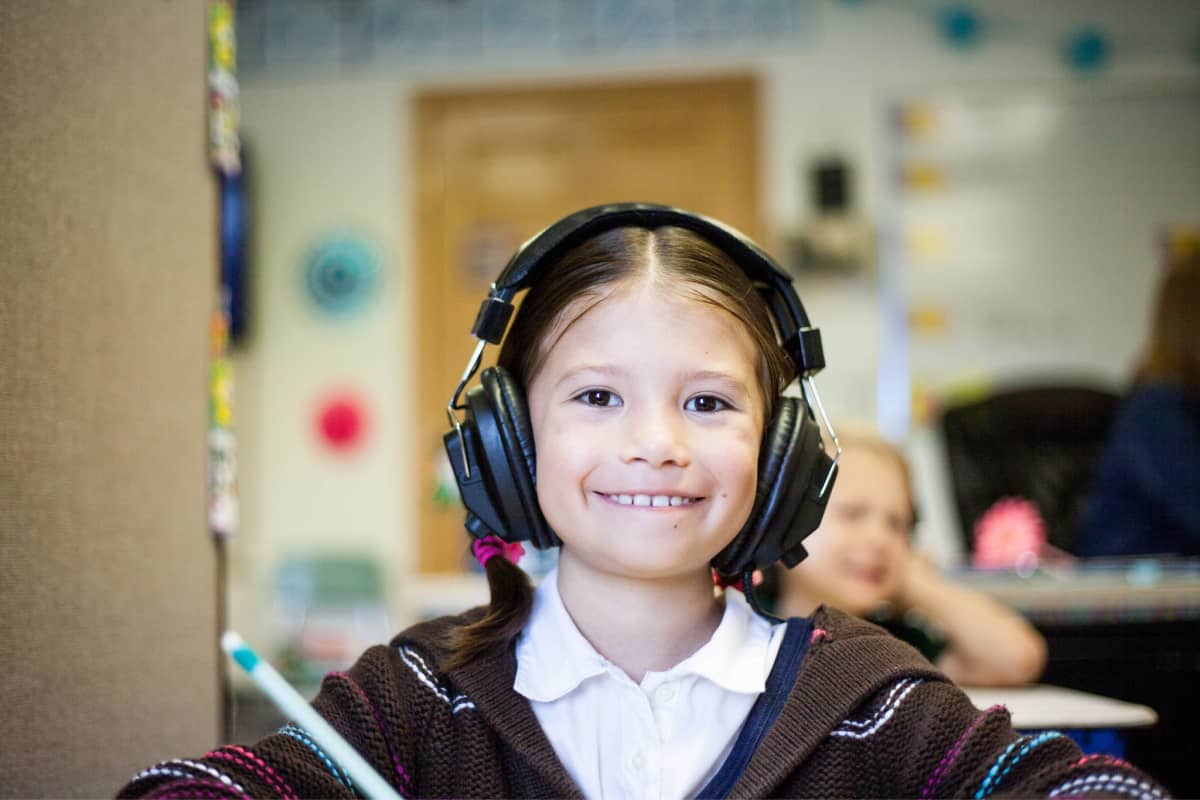Kids have different needs and preferences, which is why they need headphones that appropriately meet their requirements while also being safe for use.

Introduction
This article will talk about some of the different factors that you should consider when buying headphones for your kids.
It will also include information on:
- The importance of volume-limiting capability
- Pros and cons of wired vs. wireless headphones
- How noise-cancellation technology is an investment
- And other features to think about
Let’s get started.
5 Things to Look out for in Kids Headphones
When you’ve finally made the choice to buy headphones for your kids, it might seem convenient to just get them any other adult headphones. However, this isn’t always the best option as you might be putting them at risk of hearing loss.
That’s why kid-friendly headphones are more preferable here because not only are they manufactured with their specific needs in mind, they’re also generally more compatible and safer for use.
There are several important things you should consider when buying headphones for your kids and we’ve highlighted the top 5 things you should look out for. The best headphones for kids are the ones that have volume control and are of adequate size, there are other factors to consider, but we believe that these two are the most important.
1) Volume-limiting Capability
The World Health Organization (WHO) states that about 1.1 billion teenagers and young adults are at risk of hearing loss and this can mostly be attributed to today’s noisy technology such as smartphones and audio devices. This is why getting volume-limiting headphones for your kids is a step in the right direction.
Although there isn’t a mandatory standard for the maximum volume output of headphones, the American Academy of Pediatrics (AAP) states that the noise limit for children under 12 years old is 85 decibels (dB). On the other hand, other organizations such as WHO and the International Telecommunication Union (ITU) say that kids should listen to devices no higher than 75 dB.
Volume-limiting headphones lower the sound level by using resistors that are embedded in the cable or RCA connector.
2) Wired or Wireless
Wired and wireless headphones each have their own pros and cons and you should take this into consideration when choosing one for your kids. Below is a brief comparison table:
| Wired vs. Wireless Headphones Comparison Table | |
| Wired | Wireless |
| Pros:Doesn’t require batteriesUninterrupted usage/no charging requiredGenerally lasts longer than wirelessCheaper than wireless | Pros:Your kids will not have restricted movementOffers better protection since wireless can’t produce sounds louder than what they are designed to output |
| Cons:Can get in the way of your kid’s movementWire may get tangled and damaged after a while | Cons:Requires regular charging thus interrupting their usageMore expensive than wired |
3) Noise-cancellation
Noise-cancelling technology isn’t exactly a necessity for your kid’s headphones, but it is definitely a nice feature to have. If you’re willing to spend a little bit more in order to afford the higher-end headphones with noise-cancellation, then it is a worthwhile investment in protecting your kid’s hearing.
Having less outside noise leaking into their ears allows them to listen to music or sounds at lower volumes. In addition, this feature is great if your kids are going to spend time at high noise environments, like near an airport or a busy highway.
4) Size
Size is also one of the more important factors you should take into consideration when purchasing headphones for your kids. Depending on your kid’s age and the size of their ear, they may prefer appropriately sized on-ear or outer-ear cups on their headphones rather than ear clips or ear buds. These usually give them the most comfortable fit while being more secure on their head as well.
5) Durability
Durability is important because of the possible things that can happen to your kid’s headphones like:
- Being dropped on the floor
- Constantly being folded and unfolded
- Hurriedly stuffed in their bags
- Unnecessary tugging on the wire
- Natural wear and tear of things
Although higher quality and more expensive headphones tend to be more durable and last longer, it can definitely help to just teach your kids to be careful with their belongings.
Conclusion
In short, the best headphones for kids are the ones that have reliable volume-limiting capabilities and noise-cancellation technology while also being appropriately sized for their ears in addition to being generally durable for everyday use. There is no right or wrong when choosing between wired or wireless kids headphones as it is merely a choice of preference.
At the end of the day, the safety of our kid’s hearing is the most important thing to us and we should do our best to protect that.
Written by Mark O.



This is very helpful. Thanks. I like the headphones with volume-limiting capabilities.